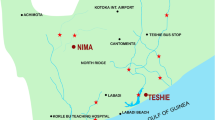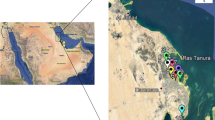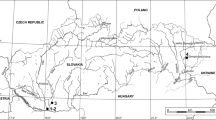Abstract
There is concern that ships’ ballasting operations may disseminate Vibrio cholerae to ports throughout the world. Given evidence that the bacterium is indeed transported by ships, we isolated pandemic serotypes O1 and O139 from ballast tanks and characterized them with respect to antibiotic resistance and virulence genes ctxA and tcpA. We carried out concurrent studies with V. cholerae isolated from coastal waters. Of 284 isolates, 30 were serotype O1 and 59 were serotype O139. These serotypes were overrepresented in ballast tanks relative to the coastal waters sampled. All locations, whether coastal waters or ballast tanks, yielded samples from which serotype O1, O139, or both were isolated. There were three groups among the 62 isolates for which antibiotic characterization was conclusive: those exhibiting β-lactamase activity and resistance to at least one of the 12 antibiotics tested; those negative for β-lactamase but having antibiotic resistance; those negative for β-lactamase and registering no antibiotic resistance. When present, antibiotic resistance in nearly all cases was to ampicillin; resistance to multiple antibiotics was uncommon. PCR assays revealed that none of the isolates contained the ctxA gene and only two isolates, one O139 and one O1, contained the tcpA gene; both isolates originated from ballast water. These results support the bacteriological regulations proposed by the International Maritime Association for discharged ballast water.


Similar content being viewed by others
References
Aguirre-Macedo ML, Vidal-Martinez VM, Herrera-Silveira JA, Valdés-Lozano DS, Miguel Herrera-Rodríguez M, Olvera-Novoa MA (2008) Ballast water as a vector of coral pathogens in the Gulf of Mexico: the case of the Cayo Arcas coral reef. Mar Pollut Bull 56:1570–1577
Altug G, Gurun S, Cardak M, Ciftci PS, Kalkan S (2012) The occurrence of pathogenic bacteria in some ships’ ballast water incoming from various marine regions to the Sea of Marmara, Turkey. Mar Environ Res 81:35–42
Burkholder JM, Hallegraeff GM, Melia G, Cohen A, Bowers HA, Oldach DW, Parrow MW, Sullivan MJ, Zimba PV, Allen EH, Kinder CA, Mallin MA (2007) Phytoplankton and bacterial assemblages in ballast water of US military ships as a function of port of origin, voyage time, and ocean exchange practices. Harmful Algae 6:486–518
Campos LC, Zahner V, Avelar KES, Alves RM, Pereira DSG, Vital Brazil JM, Freitas FS, Salles CA, Karaolis DKR (2004) Genetic diversity and antibiotic resistance of clinical and environmental Vibrio cholerae suggests that many serogroups are reservoirs of resistance. Epidemiol Infect 132:985–992
Carlton JT, Ruiz GM, Byers JE, Cangelosi A, Dobbs FC, Grosholz ED, Leung B, MacIsaac HJ, Wonham MJ (2011) Assessing the relationship between propagule pressure and invasion risk in ballast water. The National Academies Press, Washington, DC
Choopun N, Louis V, Huq A, Colwell R (2002) Simple procedure for rapididentification of Vibrio cholerae from the aquatic environment. Appl Environ Microbiol 68:995–998
Chun J, Huq A, Colwell R (1999) Analysis of 16S-23S rRNA intergenic spacer regions of Vibrio cholerae and Vibrio mimicus. Appl Environ Microbiol 65:2202–2208
Collin B, Rehnstam-Holm A-S (2011) Occurrence and potential pathogenesis of Vibrio cholerae, Vibrio parahaemolyticus and Vibrio vulnificus on the south coast of Sweden. FEMS Microbiol Ecol 78:306–313
Drake L, Meyer A, Forsberg R, Baier R, Doblin M, Heinemann S, Johnson W, Koch M, Rublee P, Dobbs F (2005) Potential invasion of microorganisms and pathogens via ‘interior hull fouling’: biofilms inside ballast water tanks. Biol Inv 7:969–982
Drake LA, Doblin MA, Dobbs FC (2007) Potential microbial bioinvasions via ships’ ballast water, sediment, and biofilm. Mar Pollut Bull 55:333–341
Faruque SM, Albert MJ, Mekalanos JJ (1998) Epidemiology, genetics, and ecology of toxigenic Vibrio cholerae. Microbiol Mol Biol Rev 62:1301–1314
Garg P, Chakraborty S, Basu I, Datta S, Rajendran K, Bhattacharya T, Yamasaki S, Bhattacharya SK, Takeda Y, Galakrish Nair G, Ramamurthy T (2000) Expanding multiple antibiotic resistance among clinical strains of Vibrio cholerae isolated from 1992–7 in Calcutta, India. Epidemiol Infect 124:393–399
Ghosh A, Ramamurthy T (2011) Antimicrobials & cholera: are we stranded? Indian J Med Res 133:225–231
Goodrich AL (2006) Characterization of β-lactam resistant, pandemic serotypes of Vibrio cholerae isolated from ships’ ballast tanks and coastal waters. Thesis, Old Dominion University
Haley BJ, Chen A, Grim CJ, Clark P, Diaz CM, Taviani E, Hasan NA, Sancomb E, Elnemr WM, Islam MA, Huq A, Colwell RR, Benediktsdóttir E (2012) Vibrio cholerae in a historically cholera-free country. Environ Microbiol Rep 4:381–389
Herrington DA, Hall RH, Losonsky GA, Mekalanos JJ, Taylor RK, Levine MM (1988) Toxin, toxin-coregulated pili, and the toxR regulon are essential for Vibrio cholerae pathogenesis in humans. J Exp Med 168:1487–149
Kaper J, Morris J, Levine M (1995) Cholera. Clin Microbiol Rev 8:48–86
Lee K (2001) The global dimension of cholera. Global Change Hum Health 2:6–17
Lipp E, Huq A, Colwell R (2002) Effects of global climate on infectious disease: the cholera model. Clin Microbiol 15:757–770
Louis VR, Russek-Cohen E, Choopun N, Rivera ING, Gangle B, Jiang SC, Rubin A, Patz JA, Huq A, Colwell RR (2003) Predictability of Vibrio cholerae in Chesapeake Bay. Appl Environ Microbiol 69:2773–2785
Mandell G, Petri W (1996) Penicillins, cephalosporins, and other β-lactam antibiotics, Goodman & Gilman’s The Pharmacological Basis of Therapeutics, 9th edn. McGraw-Hill, New York, pp 1073–1101
Marquez B (2005) Bacterial efflux systems and efflux pumps inhibitors. Biochimie 87:1137–1147
McCarthy SA, Khambaty FM (1994) International dissemination of epidemic Vibrio cholerae by cargo ship ballast and other nonpotable waters. Appl Environ Microbiol 60:2597–2601
McCarthy SA, McPhearson RM, Guarino AM, Gaines JL (1992) Toxigenic Vibrio cholerae O1 and cargo ships entering Gulf of Mexico. Lancet 339:624–625
National Committee for Clinical Laboratory Standards (1999) Performance standards for antimicrobial susceptibility testing: ninth information al supplement. Wayne, PA, NCCLS 1999: document M100-S9, vol. 19(1)
Rivera I, Chun J, Huq A, Sack R, Colwell R (2001) Genotypes associated with virulence in environmental isolates of Vibrio cholerae. Appl Environ Microbiol 67:2421–2429
Ruiz G, Rawlings T, Dobbs F, Drake L, Mulladay T, Huq A, Colwell R (2000) Global spread of microorganisms by ships. Nature 408:49–50
Sarkar A, Nandy RK, Asoke C, Ghose AC (2011) Pathogenic potential of non-O1, non-O139 Vibrio cholerae. In: Ramamurthy T, Bhattacharya SK (eds) Epidemiological and molecular aspects on cholera. Springer, New York, pp 223–243
Tauxe R, Seminario L, Tapia R, Libel M (1994) The Latin American epidemic. In: Wachsmuth IK, Blake PA, Olsvik Ø (eds) Vibrio cholerae and cholera. Molecular to global perspectives. ASM Press, Washington, DC, pp 321–344
Thomson FK III (2009) Characterization of antibiotic resistance in Vibrio cholerae isolated from ships’ ballast and other environmental sources. Dissertation, Old Dominion University
UNCTAD (United Nations Conference on Trade and Development) (2011) Review of maritime transport 2011 http://archive.unctad.org/en/docs/rmt2011_en.pdf. Accessed 23 October 2012
Vital Brazil J, Alves R, Rivera I, Rodrigues D, Karaolis D, Campos L (2002) Prevalence of virulence-associated genes in clinical and environmental Vibrio cholerae strains isolated in Brazil between 1991 and 1999. FEMS Microbiol Lett 215:15–21
Acknowledgments
We are thankful for the courtesy of many ship Captains, Chief Officers, and crew members who helped us collect samples, to Captain Phil Jenkins for his invaluable tutelage in the operations of ballast tanks, and those who assisted with collection of ballast-tank samples, including Martina Doblin, Lisa Drake, Stefan Heinemann, Leslie Kampschmidt, Kathy Moreira, and colleagues from the University of Windsor and NOAA’s Great Lakes Environmental Laboratory. We appreciate previous comments on an earlier draft of this manuscript by Alexander Bochdansky, Andrew Gordon, and Martha Stokes. Erin Lipp, Anwar Hug, and Rita Colwell kindly supplied RC-series reference cultures. Support for this work was provided in part by the National Sea Grant College Program and the multi-institutional Great Lakes NOBOB Project funded by the Great Lakes Protection Fund, the National Oceanic and Atmospheric Administration, the US Environmental Protection Agency, and the US Coast Guard. The project was co-managed by the Cooperative Institute of Limnology and Ecosystems Research and the NOAA Great Lakes Environmental Research Laboratory and sponsored under cooperative agreement NA17RJ1225 from the Office of Oceanic and Atmospheric Research, National Oceanic and Atmospheric Administration, US Department of Commerce.
Author information
Authors and Affiliations
Corresponding author
Rights and permissions
About this article
Cite this article
Dobbs, F.C., Goodrich, A.L., Thomson, F.K. et al. Pandemic Serotypes of Vibrio cholerae Isolated from Ships’ Ballast Tanks and Coastal Waters: Assessment of Antibiotic Resistance and Virulence Genes (tcpA and ctxA). Microb Ecol 65, 969–974 (2013). https://doi.org/10.1007/s00248-013-0182-7
Received:
Accepted:
Published:
Issue Date:
DOI: https://doi.org/10.1007/s00248-013-0182-7




